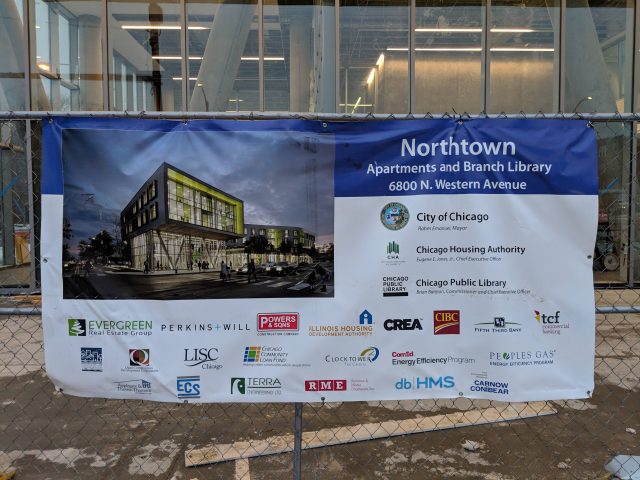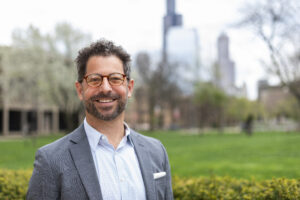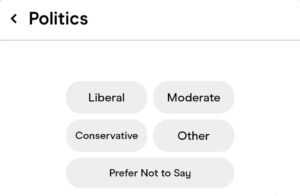In recent years Jewish residents of West Rogers Park have been pushing for a new public library to help revitalize the neighborhood and their effort, along with advocacy from other ethnic groups, has led to new construction.
“Close to two years [ago] we formed a coalition called the ‘LEARN’ coalition where we brought Jews, Muslims, Croatians, Assyrians, Latino(x), and African Americans together who all love and care about West Rogers Park to renovate and improve the library in the neighborhood,” said Shalom Klein, executive director of the Jewish Neighborhood Development Council of Chicago.
Scheduled to open in early 2019, the building at the intersection of Pratt and Western Avenues replaces the Northtown Branch located at 6435 N. California Ave., which hasn’t been updated since it was built in the early 1960s. The new branch features new books, meeting rooms, a children’s area, new technology and a Chicago Housing Authority senior housing facility above the library.
“When there’s attention made and put on issues, and there’s community building efforts around it, good things can happen,” Klein said.
The Jewish community has been a fixture of the neighborhood for more than 80 years, but the area has become more diverse over time, evidenced by the Pakistani, Iraqi and Indian businesses along Devon Avenue. The local Jewish population sees the library, although secular, as a gathering place for all residents and a benefit to everyone.
Evelyn Miks, chair of the West Ridge Community Organization and a West Ridge/West Rogers Park resident for the last 12 years, said that of the various library branches throughout the city, the Northtown Branch is on the top 10 list for highest usage. Even so, the 11,000 square foot library with few computers isn’t appealing to everyone.
“What we’ve found is people in the community are going to other libraries,” Miks said.
Miks shares the sentiment that the modern facility is good for all residents. She said that the initiative for the new library will benefit the community in general but, specifically, the many immigrant communities that reside there. The new library will be 16,000 square feet, will provide more space for interaction and three floors of housing above the library itself, which will make resources available and easily accessible to senior residents.
Chris Silva, an artist and resident of West Rogers Park, was selected by the Chicago Department of Cultural Affairs and Special Events committee to create the mural that people will see when they first enter the library. Silva lived in the neighborhood with his parents in the 1990s and recently moved back to the area. He approached the project in the spirit of diversity.
His artistic style is collage based and he used mixed media to create this piece. He started the process by walking around the neighborhood and taking photographs. He focused on signage found along Devon Avenue, which is forms one part of the mural. The piece also features a rainbow with a heart in the middle, which, according to Silva, represents the different groups of people who call the neighborhood home.
“The rainbow is a symbol I honed in on as a representation of the diversity because this is one of the most diverse neighborhoods in the city and I used it to represent the idea of ‘full spectrum,’” Silva said.
The mural will be on full display in an area that has floor to ceiling windows, which will bring in a lot of natural light and will also make the mural somewhat visible to people walking by.
“I just hope it makes the experience of entering and exiting the library a really energizing experience,” Silva said.
In addition to providing space for current residents, having a new library in the neighborhood will make the area more attractive to potential future residents. In addition to the new facility, some local parks, including Bernard Stone Park, have also been built in a collective and collaborative effort to make the area more appealing.
“Our goal was to change the perception,” Klein said. His organization will “make a very conscious effort in marketing and recruiting the neighborhood and by changing perception you change reality and that’s what’s happened beyond just the Jewish community. It has happened across other communities too.”







Be First to Comment